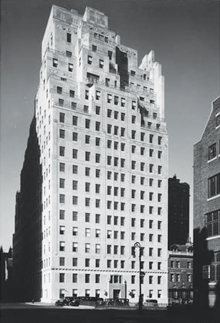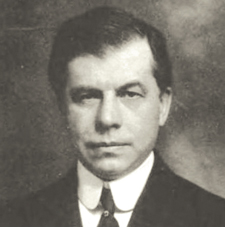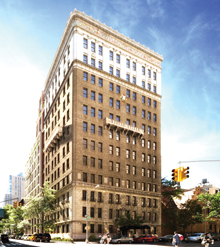Trending
This month in real estate history
This month in real estate history

1930: Ultra-luxe 740 Park Opens for Occupancy

740 Park Avenue
One of the Upper East Side’s most exclusive co-ops, 740 Park Avenue, was completed 86 years ago this month. Once construction on the 18-story building was finished, it was turned over to what the New York Times referred to as “tenant owners.” Though completed during the economic downturn following the 1929 stock market crash, “the house” had been planned and privately built for the prosperous decade that preceded it by James T. Lee, vice president of Chase National Bank and the grandfather of Jacqueline Kennedy Onassis. Designed by Rosario Candela, the co-op “epitomizes the combination of the Jazz Age, Wall Street fortunes and the new social power of Park Avenue,” Times columnist Christopher Gray opined in 1995. Upon completion, 740 Park contained 30 apartments, which ranged in size from nine to 23 rooms, but the Great Depression made its mansion-size units difficult to sell, and financial expediency prompted the cooperative board to convert the building to rentals. It reverted back to a co-op in 1952, when resident John D. Rockefeller Jr. purchased the entire building and sold units back to tenants. Current residents include Blackstone co-founder Stephen Schwarzman, designer Vera Wang and cosmetics heir Ronald Lauder.
1948: Edward Bassett, Father of Zoning, Dies

Edward Murray Bassett
Edward Murray Bassett, a lawyer and former Congressman known as the “father” of American zoning, died 68 years ago this month. The Brooklyn native was the chief author and “prime mover” of the first comprehensive zoning ordinance in the United States. Adopted in New York in 1916, the rules — which regulated the use, height and area of buildings — became a model for other cities. “Manhattan’s skyline with its attractive towers and setbacks, a thing of beauty instead of the horror it might have been if unregulated,” owes its form to Bassett, the New York Times wrote upon his death. The skyscraper that spurred passage of the zoning resolution was the 40-story Equitable Building at 120 Broadway in Lower Manhattan, which lacked setbacks and blocked sunlight in its immediate vicinity. A graduate of Amherst College and Columbia University Law School, Bassett established a City Heights of Building Commission in 1913 and took the helm as its chairman. From the 1916 enactment of his ordinance until his death, he served as counsel to the Zoning Committee of New York and its successor commissions.
1963: City Reclassifies 18 Hotels as Rooming Houses, Capping Rents
 The city ruled 53 years ago this month that a group of 18 Manhattan buildings should be brought back under rent control after concluding that landlords were operating the buildings as rooming houses rather than hotels. The total loss of collective rents for property owners amounted to $221,000 a year, the New York Times reported. The hotels, concentrated on the Upper West Side, contained 2,575 “dwelling units,” and their occupants tended to be welfare payment recipients. The 18 buildings were the last of 88 structures that had been classified as hotels “by legal opinion but not by fact,” the Times quoted city official Hortense Gabel as saying. Unlike hotels, these buildings did not provide “porters, maids, room service, a switchboard, stationery, a lobby with furniture, and a desk attendant.” The “opinion hotels” had been registered as rooming houses in the 1940s and placed under rent control, but were subsequently declared hotels due to the objections of their owners. “Recontrols” began in 1957, prompted by tenant complaints.
The city ruled 53 years ago this month that a group of 18 Manhattan buildings should be brought back under rent control after concluding that landlords were operating the buildings as rooming houses rather than hotels. The total loss of collective rents for property owners amounted to $221,000 a year, the New York Times reported. The hotels, concentrated on the Upper West Side, contained 2,575 “dwelling units,” and their occupants tended to be welfare payment recipients. The 18 buildings were the last of 88 structures that had been classified as hotels “by legal opinion but not by fact,” the Times quoted city official Hortense Gabel as saying. Unlike hotels, these buildings did not provide “porters, maids, room service, a switchboard, stationery, a lobby with furniture, and a desk attendant.” The “opinion hotels” had been registered as rooming houses in the 1940s and placed under rent control, but were subsequently declared hotels due to the objections of their owners. “Recontrols” began in 1957, prompted by tenant complaints.




